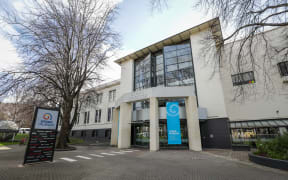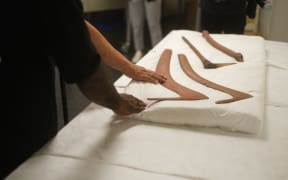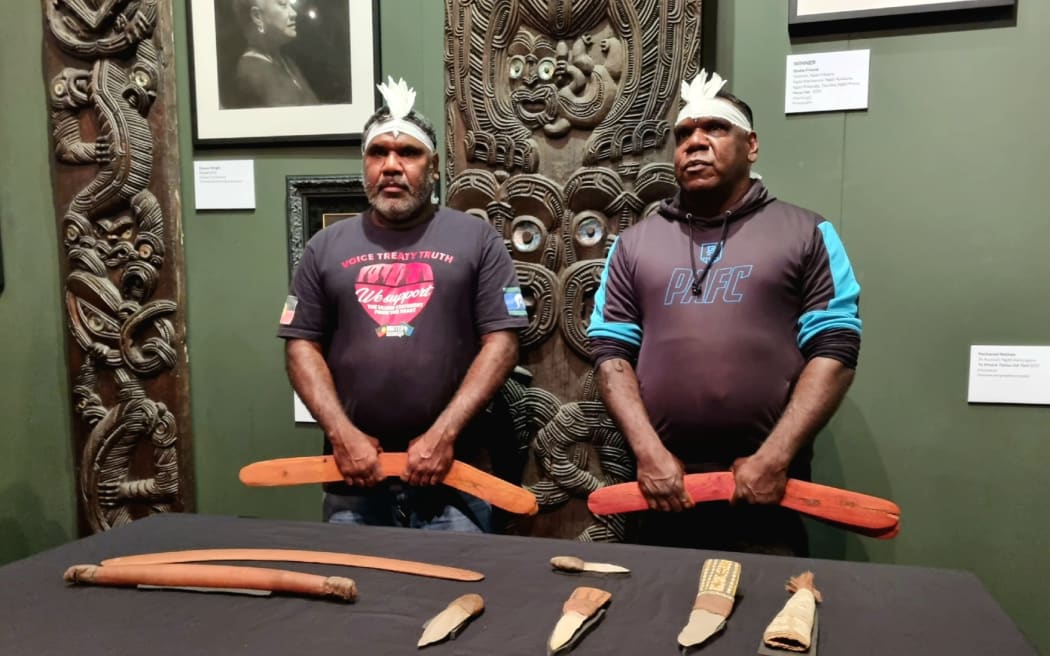
Warumungu men Jimmy Frank Jupurrula and Laurance Williams Japangarti witnessing the return of cultural artefacts that have been out of the hands of their traditional custodians for generations. Photo: RNZ/Tess Brunton
An Ōtepoti museum has returned cultural artefacts first taken from Indigenous Australians more than a century ago.
Stone knives, an adze, and a boomerang that make up the collection belonging to the Warumungu people, the traditional custodians of the Tennant Creek region in the Northern Territory.
They were returned to Warumungu men in a special ceremony at the Tūhura Otago Museum on Thursday.
It was an intimate gathering at the Tāngata Whenua gallery, witnessing the return of cultural artefacts that have been out of the hands of their traditional custodians for generations.
Warumungu man Jimmy Frank Jupurrula travelled to Ōtepoti from the Northern Territory to see his heritage returned.
"I was only 19 years old when I first walked into a museum with elders, and they looked at a lot of the objects in this museum - this is back in South Australia, New South Wales and Queensland, but they looked at these objects and they're saying 'You know what, a lot of them should come back'.
"And now, we, 20-30 years later, we are actually doing that, returning these objects back there."
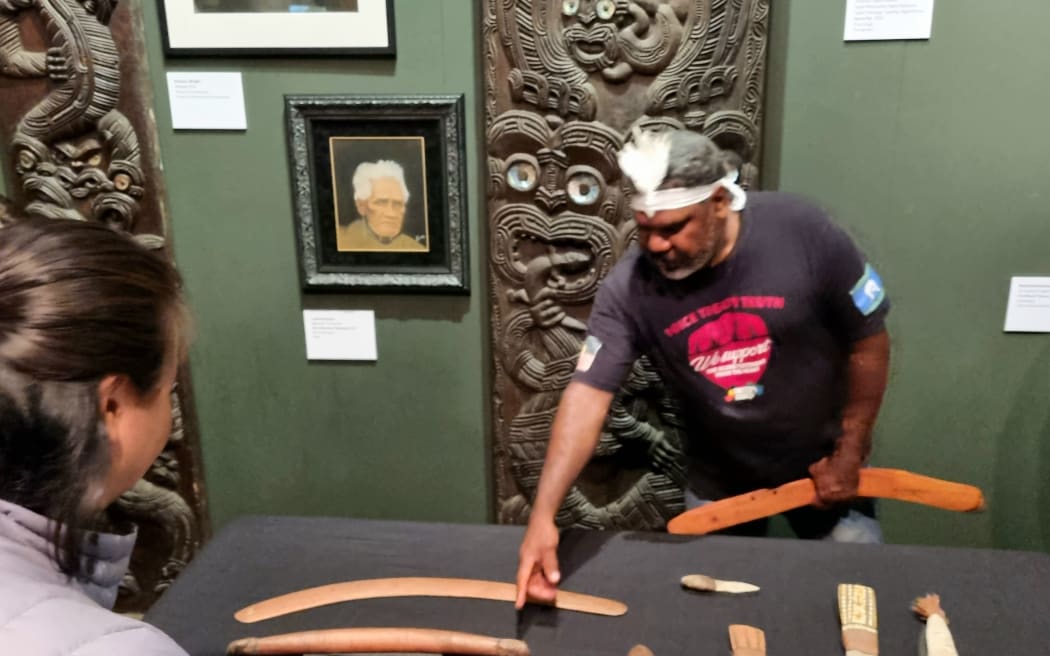
Stone knives, an adze and a boomerang belonging to the Warumungu people, the traditional custodians of the Tennant Creek region in the Northern Territory. Photo: RNZ/Tess Brunton
He was pleased they would soon be with his people.
"What you make from that country and what belongs there and who that person made from that country, it belongs to that where it comes from and go back there.
"There's a cultural protocol that lot of people don't follow. White man and non indigenous people don't recognise cultural protocol."
He hoped they soon would and that it would lead to more repatriation of cultural artefacts from other museums.
"Old people fought with spears and boomerangs back then. Now we've got to fight with pencil and paper, today's warriors."
Mana whenua representative Komene Cassidy was happy the taonga - treasure - would soon be home.
"These taonga that were stolen, in our language I said they were stolen by your pākehās and they were taken into your museums.
"I've just been told recently just before here that these were actually exchanged with taonga that was stolen by our pākehās and held in museums.
"So for this first part of the exchange where we can return these to you, we feel grateful and we feel happy that they're going to their rightful place."
The Australian Institute of Aboriginal and Torres Strait Islander Studies has a return to cultural heritage team that first kicked off discussions about bringing the artefacts home.
The programme's assistant director, Shaun Angeles Penangke, said it had taken two years of work to get to today after a lot of research and discussions.
"Repatriation is a beautiful thing. It's a powerful thing, it's a celebratory thing.
"But I guess it's really important just to recognise that this begins from trauma and dispossession.
"This story is embedded in trauma so with each old treasure that returns back to the original people that's one bit of sort of healing and reversing of that trauma that happens."
So far, the programme has identified more than 113,000 cultural artefacts that belong to Aboriginal and Torres Strait Islander people worldwide in need of repatriation.
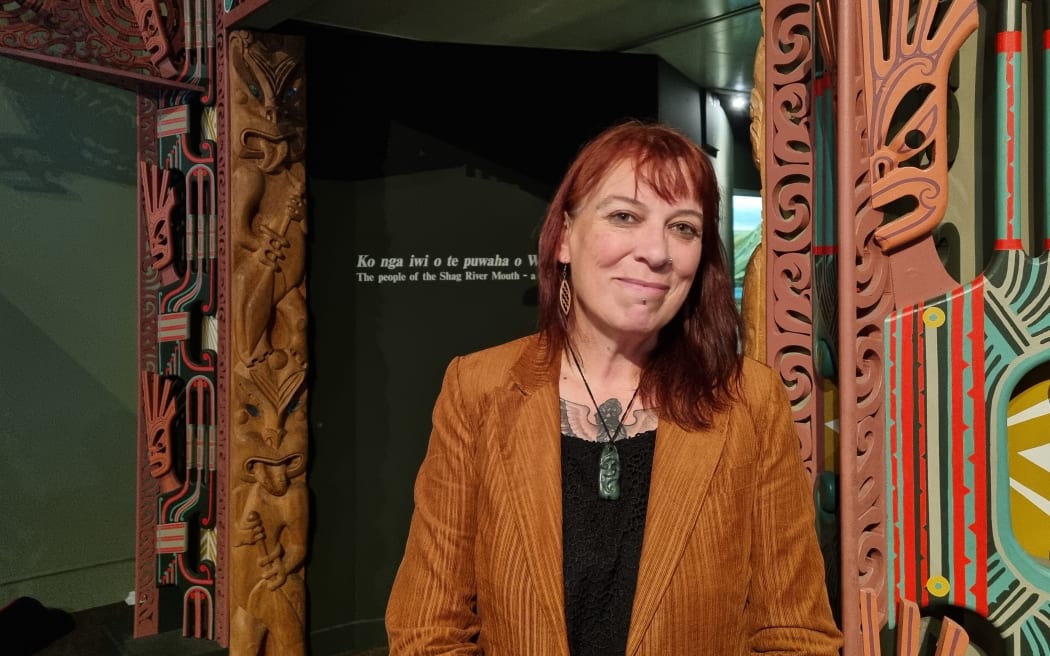
Te Rūnanga o Ōtākou chair Rachel Wesley. Photo: RNZ / Tess Brunton
Te Rūnanga o Ōtākou chair Rachel Wesley said they had also been working to repatriate their own taonga.
It had been a joyful but bittersweet day knowing how many artefacts remained out of reach of their traditional custodians, she said.
"To be able to be a part of returning to another (first nations people), it really speaks to a lot of our own aspirations and also in reducing a lot of those wrongs from the past in terms of how other indigenous cultures' material heritage has been treated."
Tūhura Otago Museum research and education director of collections Robert Morris said repatriation of cultural artefacts was a more recent phenomenon.
"But it's part of the recognition by Western institutions if you like that they need to address the issues of decolonisation and part of that is recognising that some of the materials that they have have really significant spiritual importance to the communities."
